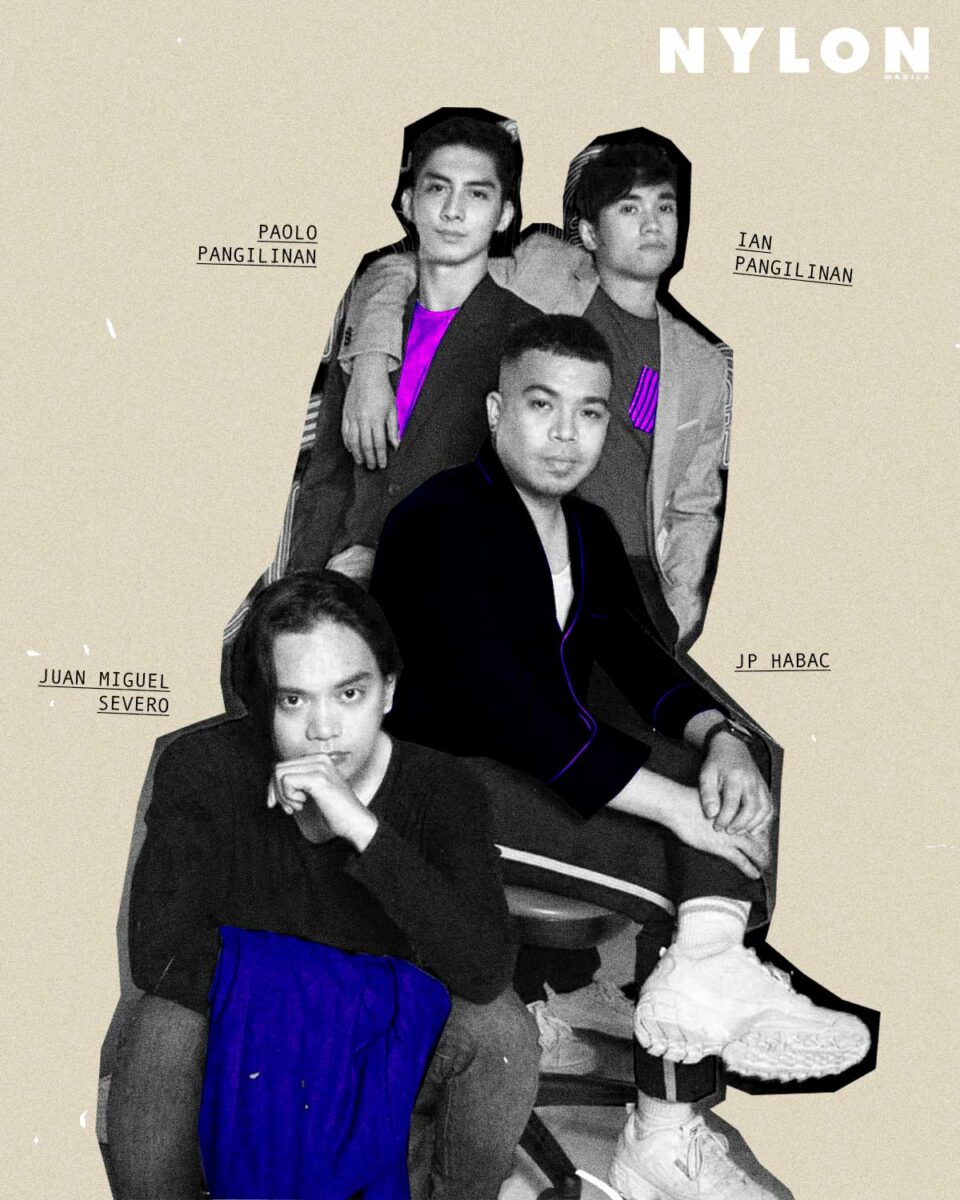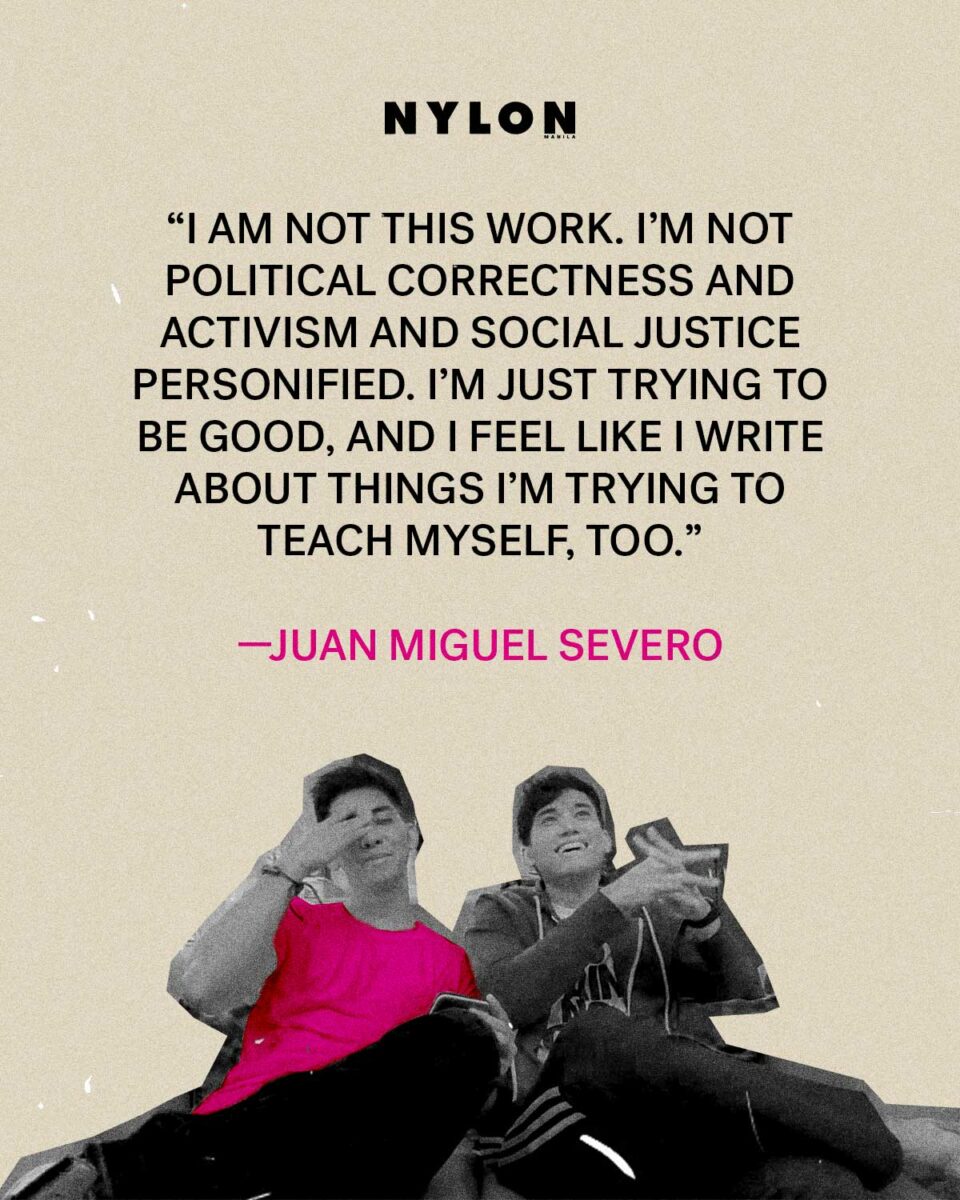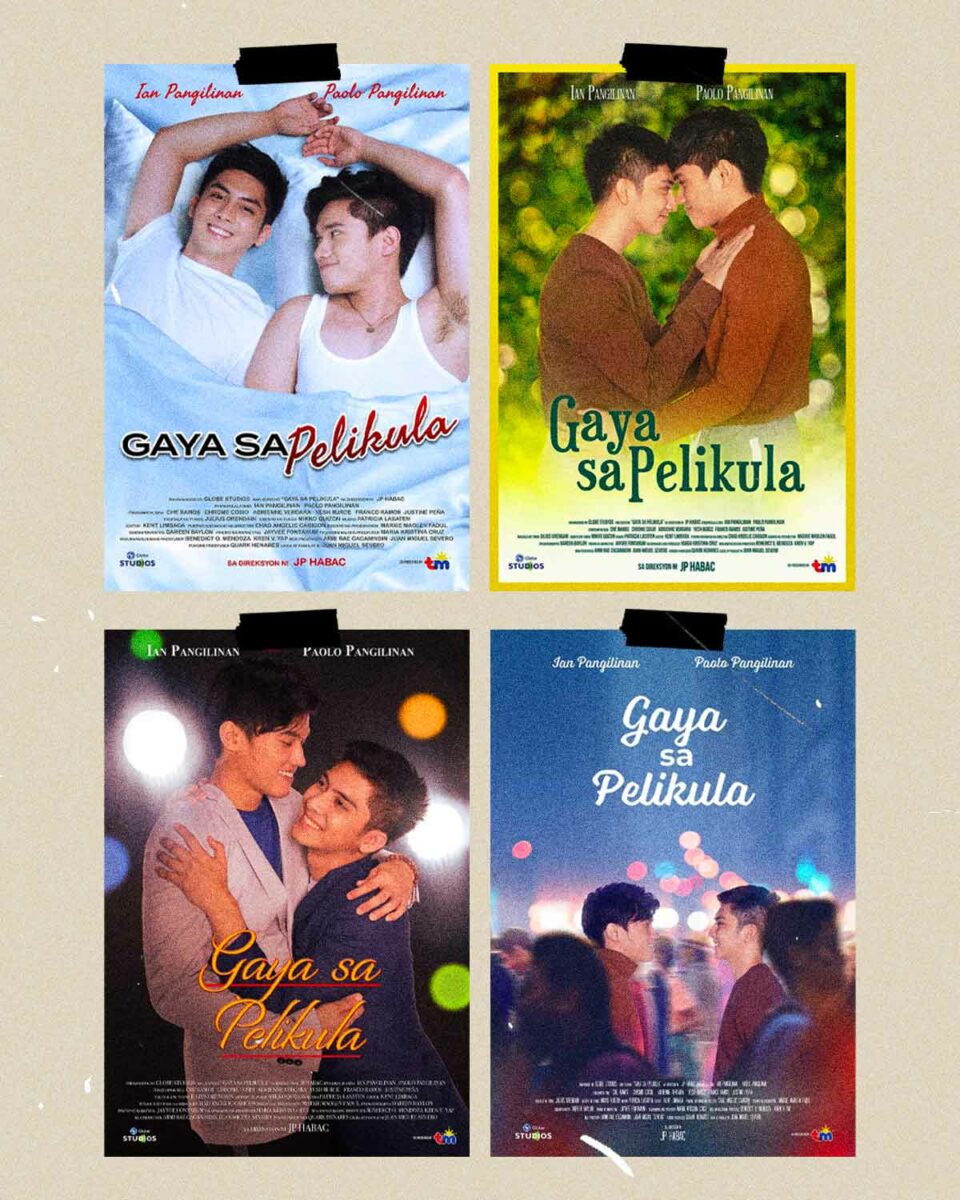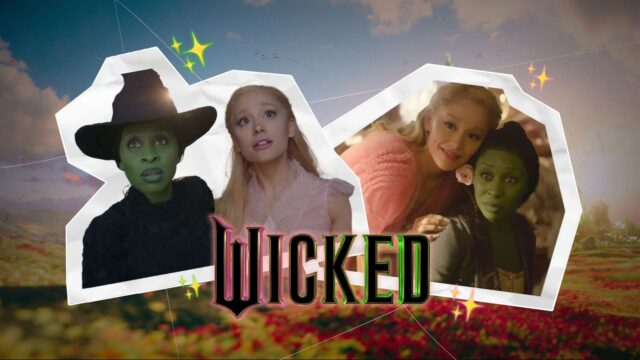Well after the final cut has been called, Gaya Sa Pelikula makes it known that in the realm of rom-coms, queer stories deserve a happy ending beyond the what if.
Related: THE F-WORD: THIS IS WHY WE NEED TO TALK ABOUT FEMME-SHAMING AND FIGHT BACK
“Gusto kong masasabi kung sa akin, ikaw ba?”
“Same, but I want to be in charge of the ending, too.”
Right from the very beginning, we were thrown in the middle of a moment heightened, mere spectators to the tentative, but nonetheless tender dance of Vlad and Karl in cinematic slow motion. Unbeknownst to us then, the words framing the movement would not only be a gist of precedence, but will prove to be a turning point in the series, Gaya Sa Pelikula. And as if waking from the escape on alternate reality, a pitch of black engulfs the scene and we are then transported in real time to be part of this telling that from the get-go has made one important promise: That we will take back our story.

And reclaim it did, but perhaps not in the surface level way one would understand when consuming entertainment, especially in a crisis-challenged chapter of our collective histories. With nothing but promise and potential, as well as of the intuitive and inspired writing of Juan Miguel Severo, the passion project that is Gaya Sa Pelikula was birthed into the mainstream consciousness thanks a lot to the swelling surge of BL (boys love) series that have become quite the hit at the early stages of lockdown and isolation. “Honestly, I have BL shows from Thailand to thank for that. When 2gether became a hit here and the market became more apparent, I decided to just piggyback on the hype and smuggle my personal truths and the advocacy into the genre,” reveals Severo, admitting that the trail blazed by these made-for-the-female-gaze tropes made it possible for his take on it to be possible. “I used to be embarrassed about this jumping in on the bandwagon thing, to be honest, but now I’m firm that it’s only right for members of a minority to take these opportunities to amplify their truths. I am even more grateful for the storytellers who made this possible for us. To our drag queens, our trans and femme siblings, who have always been on the front lines of the struggle,” he says. “Before all this talk about media representation and visibility, they have always been there. I am proud to have been able to write something like this for the community, but this pride comes with a prayer and a responsibility: I look forward to more stories from different parts of the spectrum be told by more queer storytellers, and I hope I get to pass the mic to the next ones.”
But we are not here to talk about the beginning, because as it stands, the hit digital series produced by Globe Studios and directed by JP Habac, has since rolled its penultimate final credits. After 8 episodes of the refreshing and riveting romantic comedy, consistently chalking up to over a million views online, has come to an end.

Paolo Pangilinan (UL), Ian Pangilinan (UR), Juan Miguel Severo (LL), JP Habac (LR)
No matter the emotional capacity and maturity of the person, navigating endings are never easy, at least for the most part. Sure, with closure comes the possibilities that are perhaps bigger and better than the one being left behind—that is whether we choose it to see it as so at that breaking point. But wherever one stands, it is by all accounts heartbreaking. Yes, we are mostly alluding to relationships here, but the same can be said about a great film or series that has just dropped the velvet curtains.
With a suspension of disbelief that is requisite of works anchored in fiction, we know that a conclusion will be drawn at some point, but even so, there are those soul-stirring works that just sear deep, that you begin to imagine what happens after the score soars way past the parting shot. This is arguably a testament to an effective entertainment, as it not only latches on deep, but lingers well after considerable time has passed by. While a lot of us are in a fresh state of denial, Juan Miguel Severo, who despite being a few steps ahead of the grieving process is still finding it hard to let go of the cultural timestamp Gaya Sa Pelikula has accorded its audience.

“I have a gaping hole in my chest. I’ve been asking myself, ‘What do I do with this love now?’ And I do know the answer; I have other projects in development now and I’m trying to transfer it to them, but it’s hard, especially because I’ve never felt like this toward a project before and I’m not sure I will ever again. I’m Katy Perry–Thinking of You.mp3 basically,” he relates. But even with the adamant assertion that what once was just a fragment of truth in the broader stroke of heterosexual romantic comedies is now immortalized in a piece of queer literature that was created by queer people for queer people, he is still evasive of being enshrined in such a special place in the hearts of many queer people, kids and adults included. “I appreciate the love, especially for the work, but I’d hate to be put on a pedestal because of it. I am not this work. I’m not political correctness and activism and social justice personified. I’m just trying to be good, and I feel like I write about things I’m trying to teach myself, too,” he reasons. “Ayoko lang mapunta na naman tayo sa personality politics. Baklang may clout lang naman ako. The principle of equality is the one that must to be put on a pedestal. We need collective action, not a Mockingjay. Or a Mocking-gay. Charot.”
Humility aside, one cannot deny the profound effect of Gaya Sa Pelikula, especially for this once-upon-a-time BL averse writer. Before you cast stones my way, a little context would do you good. You see, I am obsessed with romantic-comedies. No, really. Not only have I gone through the lists of both the popular and critically acclaimed sort, I can probably wear you out with the intricacies and nuance of this mostly dismissed genre. However, as the assumption that parlaying to the queer rom-com would be a seamless, if not natural transition, it wasn’t. In fact, the entire time everyone was so fired up about it, I met it with resistance. It wasn’t that I wanted to deny its merits, but for someone who grew up without having a clear and concise representation in a genre I found great joy in, I didn’t think it was possible to have what the girl and guy had onscreen. So, much like the rest of my generation and the ones before me, I contented myself in the box of a straight rom-com, constantly dreaming of my own what if—even if we all know that the dynamics of relationships are different for the LGBTQIA+ community. It isn’t just as easy as the guy meets girl, guy and girl hit a climactic argument, guy and girl relent with lessons learned and end up with happy ending formula. Needless to say, it just didn’t present itself as a possibility, at least for my time.

“It’s definitely a privilege to be attached to a project that moved people and I am grateful that the truths we tried to tell resonated with a lot of people. But I think the thing I’m most proud of is the community we, the team, were able to build with the fans and the YouTube reactors—and the conversations that we had and are still having,” says Severo in our own exchange online, where I share this perspective-shifting breakthrough of my own queerness. After being initiated into the genre by Gameboys, I quickly dove into Gaya Sa Pelikula. Here, it became as clear as the reflection of my reactions while watching the story of Vlad and Karl unravel in front of me from the mirror in my room, I could finally see myself onscreen. The throes of young romance type of narrative may well be past its acceptable point for someone my age, but that doesn’t mean a love like in the movies was impossible. Just as Vlad and Karl (played to earnest and painful perfection by Ian Pangilinan and Paolo Pangilinan) found comfort in a home with each other, one that was reflected on the television screen turned off, as did everyone who stuck by the series in its 8-episode run. In Gaya Sa Pelikula, our truth, our pain, and our love didn’t have to exist in the margins of someone else’s romantic comedy—it was (and still is) our space with our own story.
“I initially intended for Gaya Sa Pelikula to be a showcase of how things should be and not how things are, but I realized that the danger in presenting “fairy tales” is that there’s a tendency to not give the audience, especially the young ones, the necessary tools to navigate certain complications that happen in real life,” he details. “Realizing this, I decided that it would be an incomplete experience to show people how things should be without addressing how things are, first. Oh, and yeah, I told you about that monologue because it was something I had to write as some sort of tribute to our generation and the ones prior.” It then goes without saying how much this show wrecked me, especially in the paragraphs of untold that spoke from the eyes and heart of its characters, all simply motivated by their own understanding of love. But just like Kintsugi, the Japanese art of repair of broken pottery by mending the pieces with gold, there was something more beautiful and far more realized than what once was. “I hope that the main takeaway here is that we have ownership of our truths and that there’s a bigger fight outside. It was intentional that there is no real villain in the series, because the real enemy here is the system in which this world operates,” Juan Miguel Severo divulges. “To the Karls, I hope you know that it’s okay to take your time and that you have us to welcome you when you’re ready. To the Vlads, you are not wrong to want to be loud about your love; you have every right to be.”
As entertainment functions on a plane of escape, it shouldn’t distract from the fact there is a real world out there with real issues and problems that we have to face and conquer. It isn’t a vacuum after all, as utmost empathy is necessary to extend every human being, the Karls and Vlads of the world especially—and for Severo, this is enough motivation to keep pushing the queer narratives in his fortunate capacity. “Aside from the fact that the passage of the SOGIE Equality Bill is long overdue, there will always be Karls who are struggling to accept themselves and Vlads who are aching to assert their rights to love freely. Those for me are enough reasons to keep on telling queer stories,” he says. “As far as I’m concerned, while I believe that the 8 episodes are able to stand on their own, the story isn’t finished yet! So yes, this is the story I did intend to tell, but it’s not yet done.”
Gaya Sa Pelikula started with a dance—slow, steady, and yes, sentimental—proving to be pivotal points of catharsis throughout the series. While it was done in the assurance of closed doors, it was here that they could let go and just exhale. Here, they found footing in their own narrative, growing into a confidence that would see them start to see a life in their actualized truth beyond the confines of the condo unit. “Marapat ka sa pag-ibig na hahayaan ka magsayaw nang walang halong takot at hiya,” closes one of the episodes. No trepidation, no tears—this is what Gaya Sa Pelikula has compelled as it nudges the door open for the rest of the world to see. The safety and comforts are fine, but there is a world out there that deserves this kind of love and life to be seen, felt, and understood. Finally, our truth can dance in grace and liberty. Finally.





